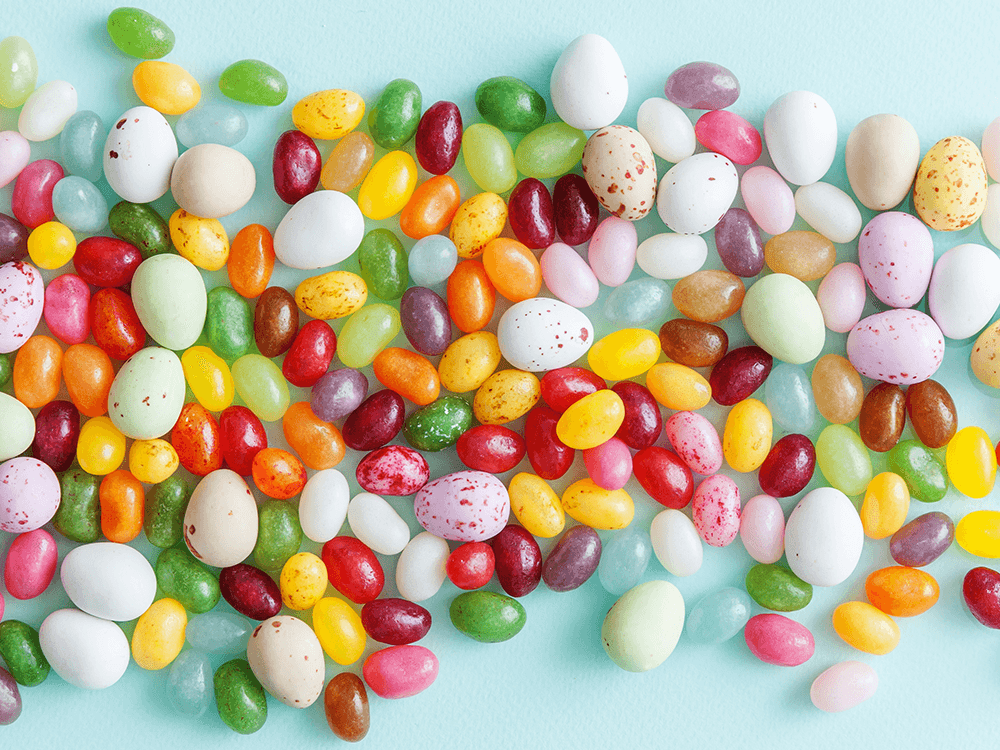The History of Jelly Beans and Easter
Because of its egg-like appearance, most historians believe that jelly beans originally became connected with Easter in the United States in the 1930s.
When plastic Easter eggs were invented, jelly beans could be placed inside.

Only a little portion of the jelly bean’s history can be traced back to its lost beginnings in ancient times.
Experts generally agree that Turkish Delight, a delicacy from the Middle East, is the ancestor of the soft center.
Originally developed in France in the 17th century to produce Jordan Almonds for the Royal Court, panning has evolved into the shell coating method.
Almonds were rolled in sugar and syrup in a pan until they were coated in a candy shell by the French confectioners’ first step.
It’s still termed “panning” today, despite the fact that giant spinning drums handle the hard lifting.
Despite the fact that the majority of the work is done by machines, skilled confectioners use their expertise in the panning process to create the perfect shell.
The two procedures somehow found their way to the United States.
An advertisement for William Schrafft of Boston promoting the shipment of jelly beans to Union soldiers during the Civil War is the first documented appearance of a jelly bean.
What’s the origin of the name “jelly beans”?
Candy has long been manufactured into unique shapes by confectioners. It was and still is common practice to shape confectionery into familiar shapes.
During the holidays of the 19th century, candy mice were a popular treat for youngsters in England.
100-year-old product lists from Jelly Belly Candy Company illustrate some of the confections made by the Goelitz family’s first generation.
Vegetable and seasonal shapes, such as Easter bunnies and chestnuts, were popular inspirations for candy makers.
Beans and vegetables from the farmers’ fields dominated the diets of most Americans in the 1800s. Bean-shaped soft jelly was created by a smart candymaker.
It’s possible that the same candymaker figured out how to coat it with a shell to prevent it from sticking. Because of this, the term “jelly beans” was coined. Today’s Jelly Belly beans are still shaped like a bean.
It didn’t take long for jelly beans to make their way into general shop “penny candy” jars, where they were sold by the weight and carried home in paper bags.
Because of their egg-like look when nestled in a jelly bean, jelly beans were a feature of the Easter celebrations of the 1930s.
It was in 1965 that the Herman Goelitz Sweet Company began reviving this ancient candy by pumping up the flavors and their product was a favorite of the governor of California, Ronald Reagan.
In the United States, the jelly bean is as American as the apple pie!
Be the first to write a comment.